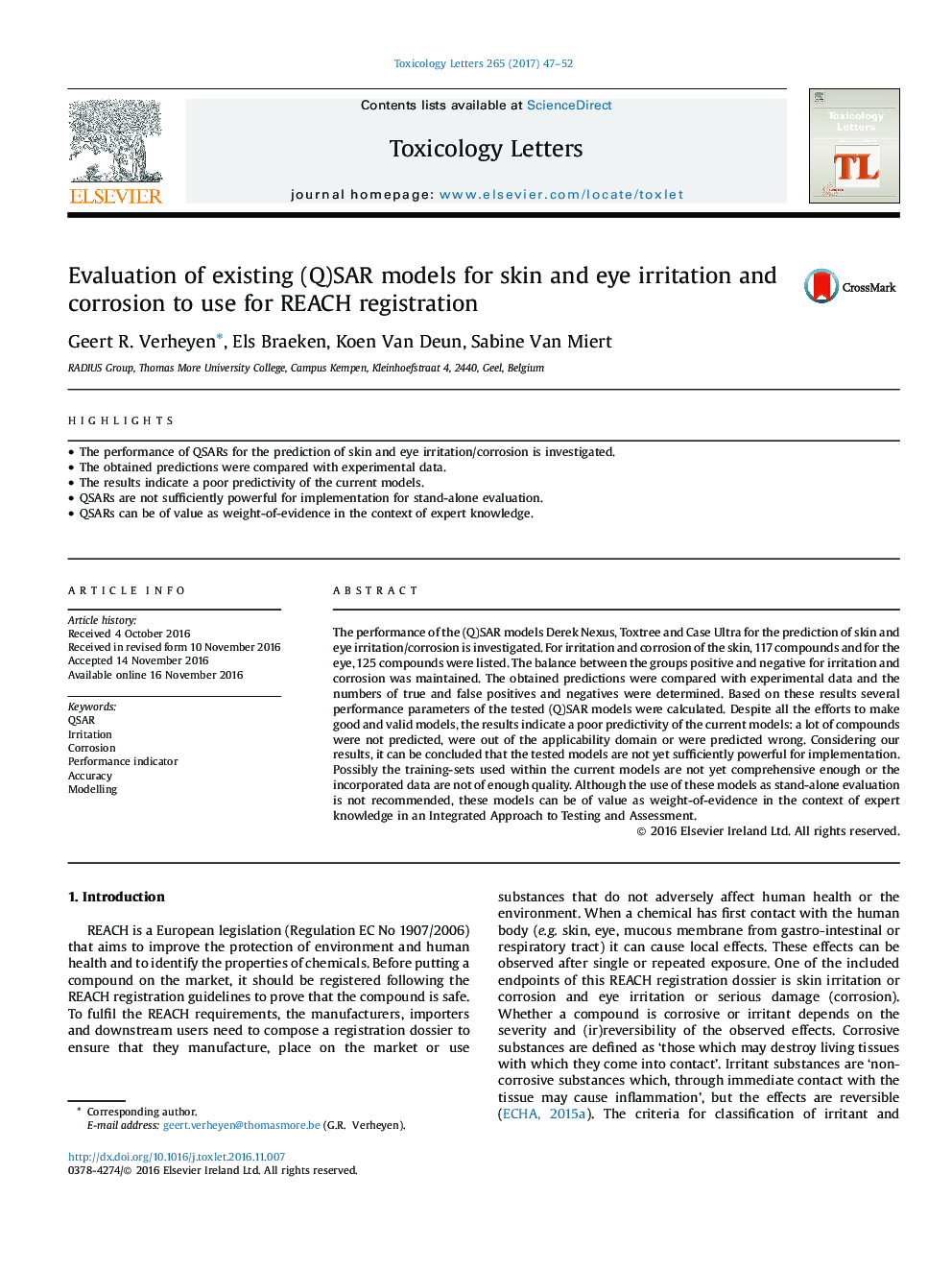| Article ID | Journal | Published Year | Pages | File Type |
|---|---|---|---|---|
| 5562254 | Toxicology Letters | 2017 | 6 Pages |
â¢The performance of QSARs for the prediction of skin and eye irritation/corrosion is investigated.â¢The obtained predictions were compared with experimental data.â¢The results indicate a poor predictivity of the current models.â¢QSARs are not sufficiently powerful for implementation for stand-alone evaluation.â¢QSARs can be of value as weight-of-evidence in the context of expert knowledge.
The performance of the (Q)SAR models Derek Nexus, Toxtree and Case Ultra for the prediction of skin and eye irritation/corrosion is investigated. For irritation and corrosion of the skin, 117 compounds and for the eye, 125 compounds were listed. The balance between the groups positive and negative for irritation and corrosion was maintained. The obtained predictions were compared with experimental data and the numbers of true and false positives and negatives were determined. Based on these results several performance parameters of the tested (Q)SAR models were calculated. Despite all the efforts to make good and valid models, the results indicate a poor predictivity of the current models: a lot of compounds were not predicted, were out of the applicability domain or were predicted wrong. Considering our results, it can be concluded that the tested models are not yet sufficiently powerful for implementation. Possibly the training-sets used within the current models are not yet comprehensive enough or the incorporated data are not of enough quality. Although the use of these models as stand-alone evaluation is not recommended, these models can be of value as weight-of-evidence in the context of expert knowledge in an Integrated Approach to Testing and Assessment.
